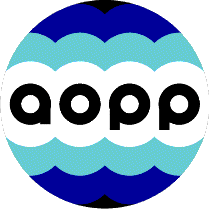



Field 27 should be a scalar lin_shear, and field 43 should be a vector
lin_shear_var_z.
(This is the same problem identified by Chiara over a year ago.)
[Next]
Dear colleagues,
with some delay the reprocessed orbit 2081 with new non-linearity
correction and ice-correction is ready. Look at the previous word
document for details.
[ftp details removed]
for each sweep in each channel there are two ascii files one for the
radiances and one for NESR.
The first line in the files is text (not usefull for you)
the second: xstart
the third: xend
the fourth: deltax
the fifth: npoints
the following lines radiance or NESR
after the spectral data:
one line (only for radiance file not for NESR file) with: processing
date (level 1b generation), measurement date and time, alditude,
latitude and longitude of tangent.
three further lines which are not important.
The file names contain the orbit number, channel(A is denoted as
A1), sweep index, sweep dir (0=forw, 1=rev) and other information
not relevant here.
If you have questions: Gottfried Schwarz has already processed
some scans
Dear Victoria,
> Dear Manfred, Georg,
> Thank you for the new data and info. I have a question about the sweep
> numbering: you've indicated in the document which sweeps go with which
> scans for the intercomparison profiles, but the sweep numbering doesn't
> match the sweep IDs in the L1B data (and the scan numbers in your
> documents are offset by 1 from the amil2da numbers): e.g. "scan 3" in the
> amil2da intercomparisons is the 4th sweep (counting starts at 0), and in
> L1B corresponds to sweep IDs 41-57 In your table in the reprocessing
> document you associate sweeps 30-46 with scan 3 (scan 2 in amil2da/ESA
> numbering), so I;m confused about where these sweep numbers come from.
Sorry to tell you that the level 1a numbering of sweeps is not linked
to the sweep IDs or scan IDs you are used to. Thus, the only
chance you have to identify the appropriate level 1a sweep IDs you
should check time or lat/lon. The only thing we can tell you is that
level 1a sweep IDs are numbered consecutively as they are
measured. Some numbers are missing since they corrspond to
offset measurements which are also counted by the level 1a sweep
IDs, but, of course, are missing in the scene radiance files.
Level 1a IDs 0 to 6 correspond to the seven lowermost tangent
heights of an incomplete scan at the beginning of the orbit. IDs 7 to
12 are offset sweeps, and complete scans (of 17 sweeps each) start
with ID 13. Every 5 complete scans they are again interrupted by
blocks of 6 offset sweeps.
Hope that helps
Greetings,
Manfred + Georg